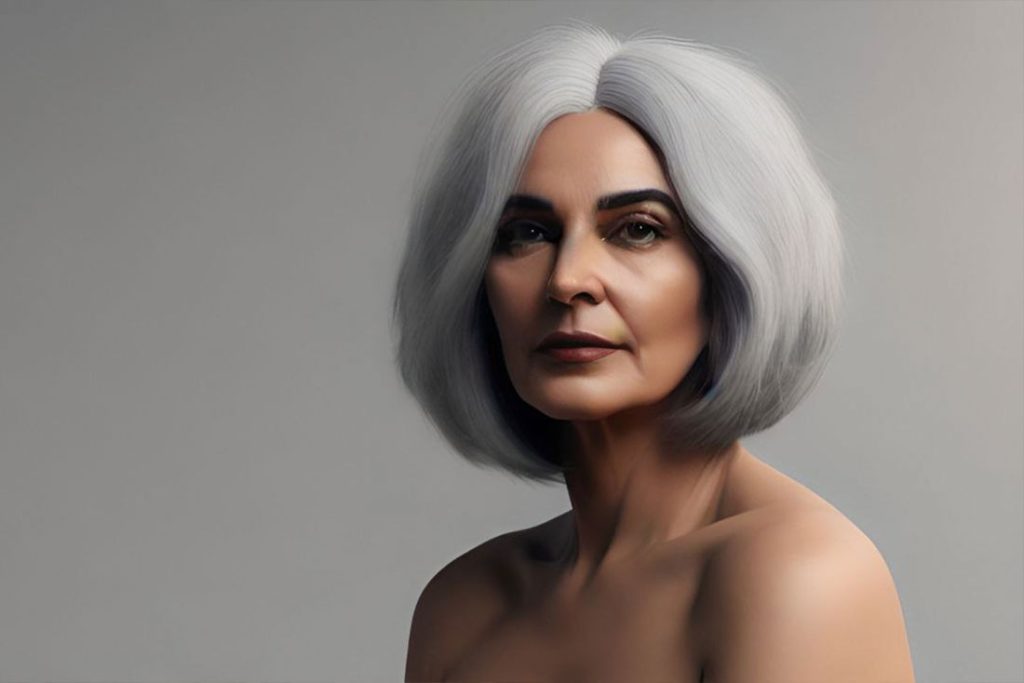Element 1 of Hair Design: Design Lines
In the vast world of hair design, understanding the basic elements is the first step to creating awe-inspiring hairstyles. While many might overlook the nuances, mastering Element 1 – the Design Lines – is foundational. They not only set the structure but also breathe life into a design, guiding the viewer’s eye through a captivating journey. This article delves deeply into the intricate world of design lines in hair styling.

The Essence of Design Lines
Design lines are the backbone of every hairstyle, from the simplest to the most elaborate. They determine the form and space, sketching the blueprint upon which every hairstyle is built. These lines are essential in directing how a design flows, creating movement, structure, and dynamism.
A Spectrum of Lines in Hair Design
1. Horizontal Lines: The Broadening Effect

- Definition: Horizontal lines run parallel to the horizon, providing width to the hairstyle.
- Impact: By building weight in the design, horizontal lines give a fuller appearance. Commonly seen in one-length and low-elevation haircuts, these lines lend an expansive feel to the hair.
2. Vertical Lines: The Elongating Magic

- Definition: As the name suggests, vertical lines run up and down, adding a sense of length and height.
- Impact: Perfect for those seeking a slenderizing effect. By drawing the eye up and down, these lines give a stretched-out illusion, often used in graduated or layered haircuts with higher elevations.
3. Diagonal Lines: The Interplay of Angles

- Definition: Positioned uniquely between the horizontal and vertical, diagonal lines offer a dash of interest to the design.
- Impact: With their ability to emphasize or play down facial features, diagonal lines bring versatility. Specifically:
- Diagonal forward lines usher movement towards the face.
- Diagonal back lines guide the gaze away from the face.
4. Curved Lines: The Dance of Fluidity

- Definition: Moving in either full or semi-circular patterns, curved lines introduce softness and flow.
- Impact: Whether large or small, these lines, moving clockwise or counterclockwise, craft an illusion of movement. Placed in various directions, they can form patterns like waves, adding depth and dynamism.
Harnessing Lines in Hair Design
The choice of line, its direction, and the synergy of combinations set the tone for the entire hairstyle. A nuanced understanding of lines paves the way for the integration of hair extensions, braids, and hairpieces, leading to designs that resonate with clients’ personalities and preferences.

- Single Lines: Predominantly seen in one-dimensional designs, single lines are the hallmark of one-length or blunt hairstyles. Ideal for those seeking minimal fuss, these styles often employ human or synthetic hair extensions.
- Parallel Lines: These are lines that echo each other, either straight or curved. They infuse intrigue and rhythm into the design. Techniques like crimping or creating crinkle waves are perfect examples of the mesmerizing impact of curved parallel lines.


- Contrasting Lines: These are the intersections of horizontal and vertical lines at a 90-degree angle. These lines create a bold, hard edge in the design. Hairstyles with contrasting lines exude a sense of confidence, best suited for individuals who prefer distinct, strong styles.
- Transitional Lines: Often curved, these lines act as the mediators, softening the stark differences between horizontal or vertical lines. They play a crucial role in texturizing haircuts, ensuring seamless haircolor placements and flawless color blends.
- Directional Lines: These are lines characterized by their pronounced forward or backward movement. Directional lines infuse a sense of purpose and flow to the design, guiding the viewer’s gaze in a specific direction.


Conclusion
The art of hair design is a symphony of structures and flows, and design lines are the notes that compose this melody. Recognizing and harnessing the power of lines – horizontal, vertical, diagonal, and curved – is a game-changer. As hair designers become adept at using these lines, they unlock the door to boundless creativity, setting the stage for masterpieces that captivate and inspire.






